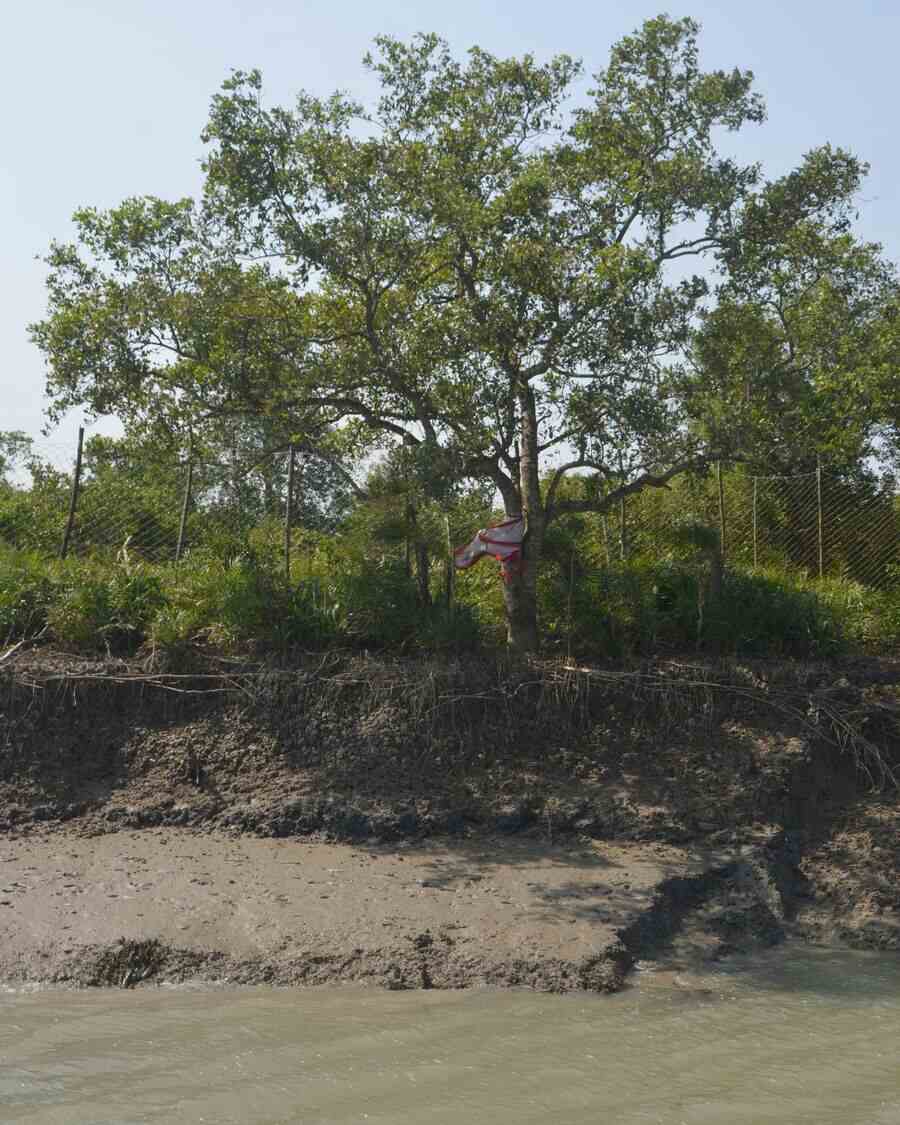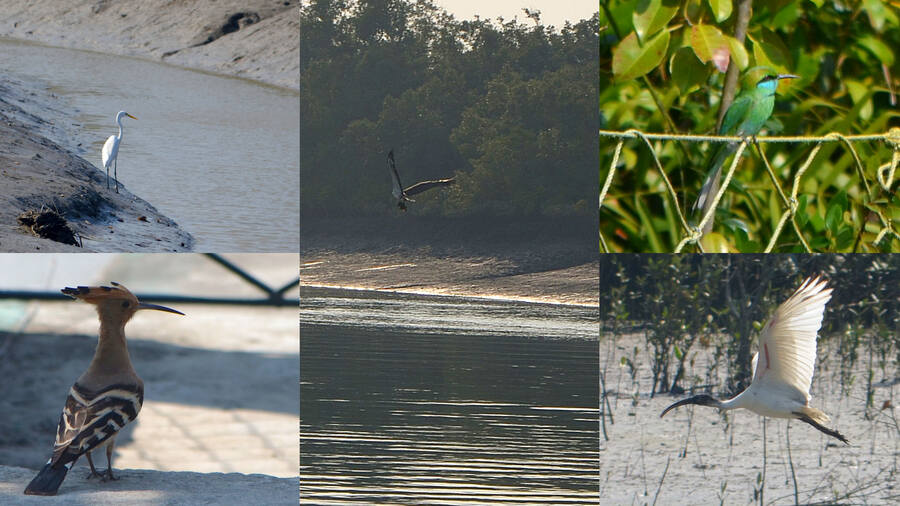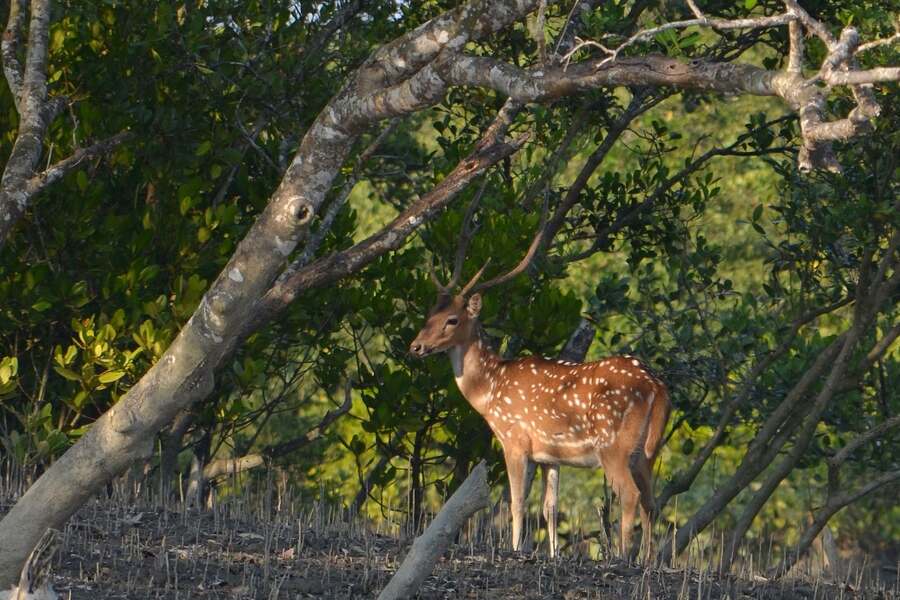
The approximately 10,000 square kilometre national park sits on the Ganges delta and is a natural World Heritage Site shared by India and Bangladesh. Named for the abundant sundari trees that grow in this primarily mangrove forest, the park is the home of the Bengal tiger. Recent estimates suggest there are about 96 tigers in the reserve
Rumela Basu
Mythology and legends have often helped protect forests and their inhabitants from destruction by humans and the Sunderbans has its own stories too. Bon Bibi, the mother goddess of the forests and Bagh Debata, the tiger god, are worshipped by locals of all faiths. Small and big temples, including this one at the Netidhopani jetty, dot the landscape
Rumela Basu
The Netidhopani jetty, a gateway to the forest’s core area, is a well-constructed site for visitors to disembark. A watchtower offers a view of the jungle’s only potable watering hole, and a small park with statues and information boards highlight the rich flora and fauna, including showing the hunting style of a tiger in the Sunderbans
Rumela Basu











